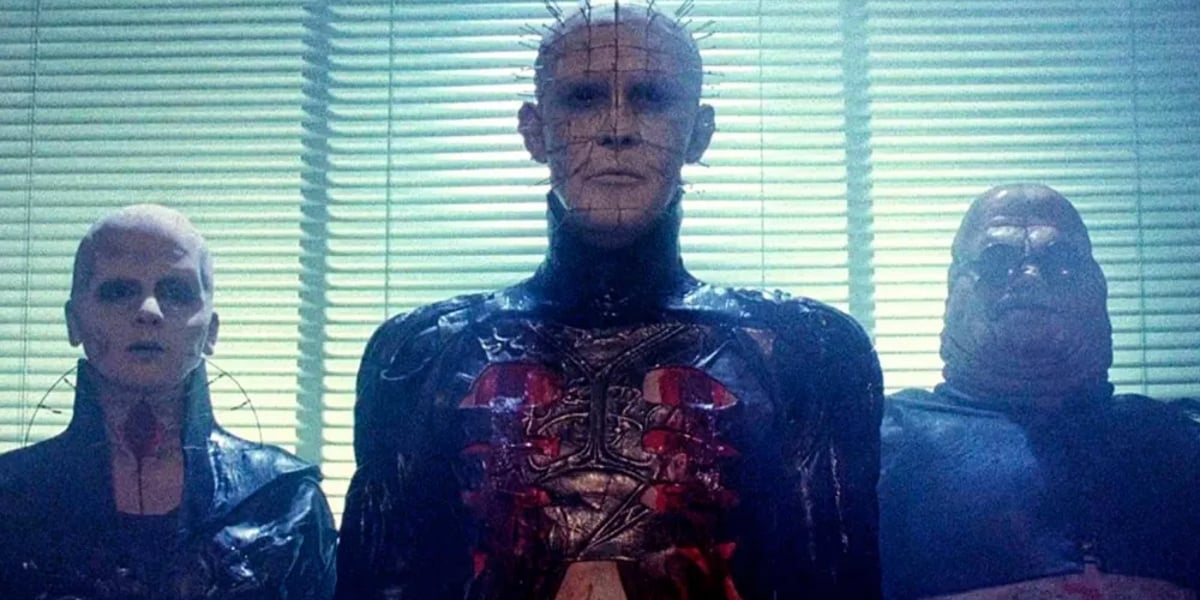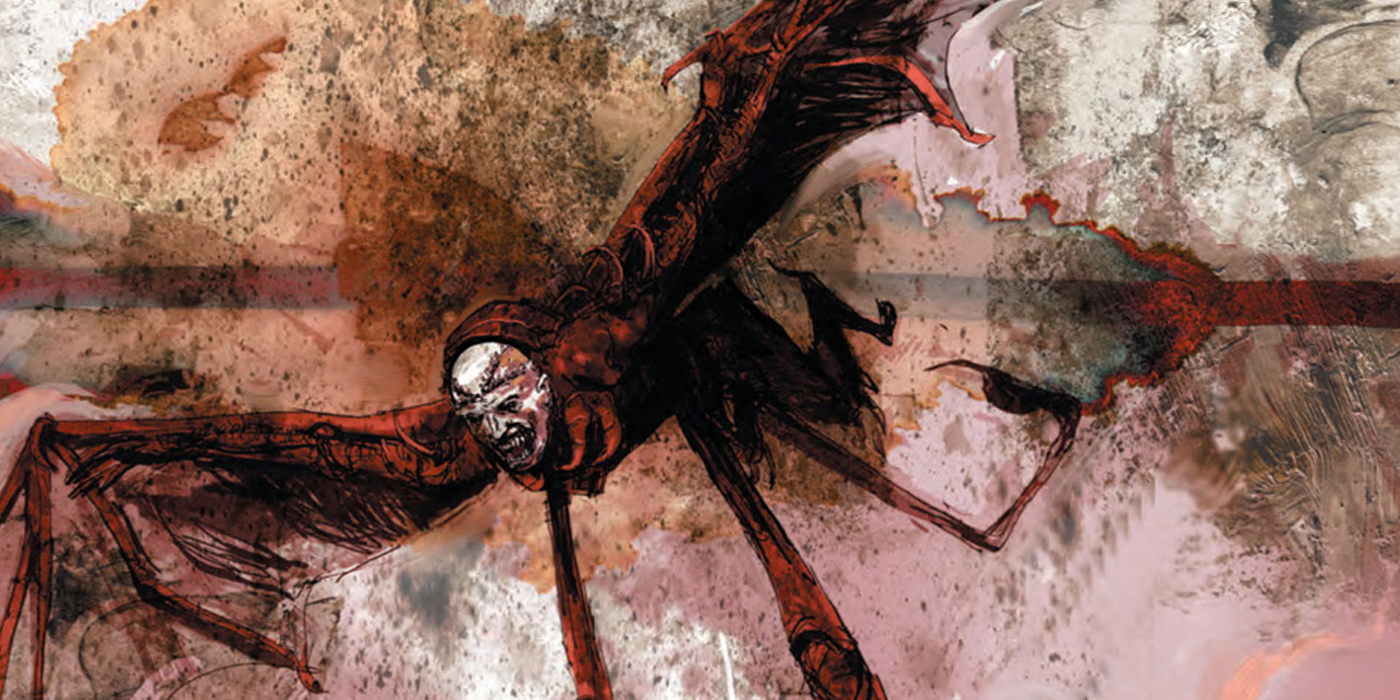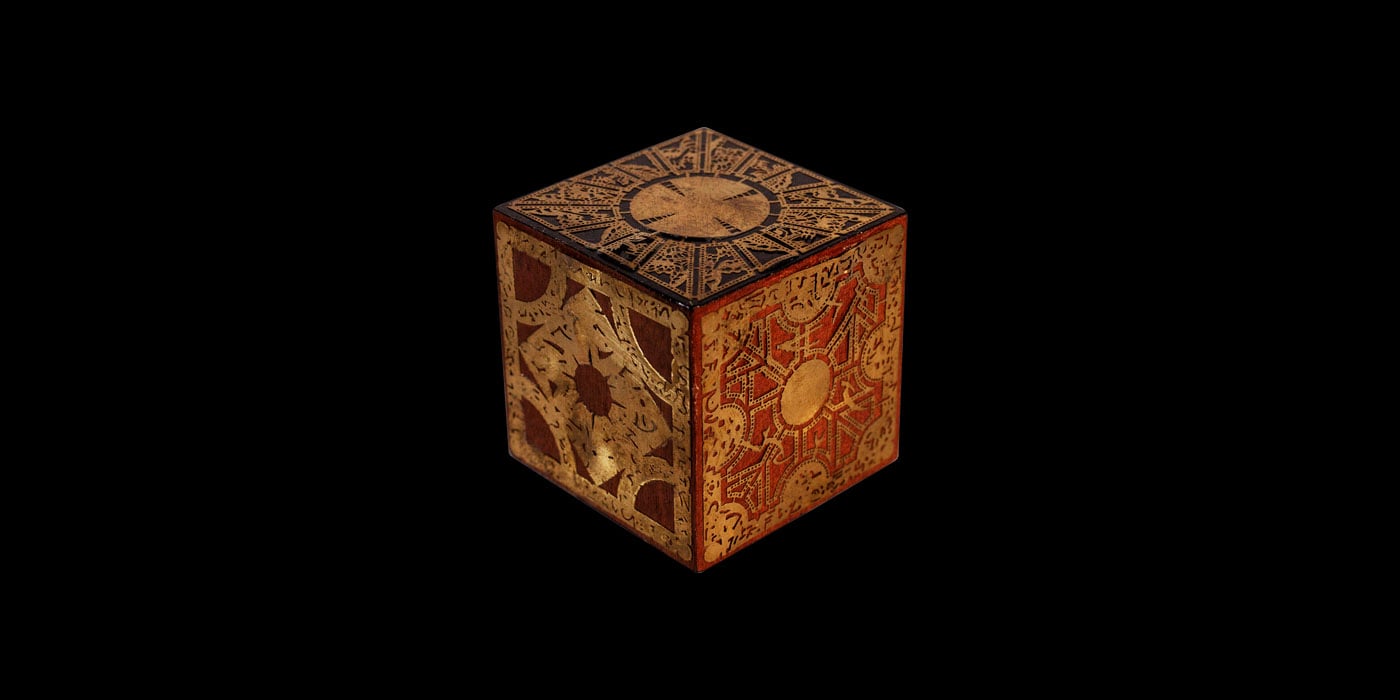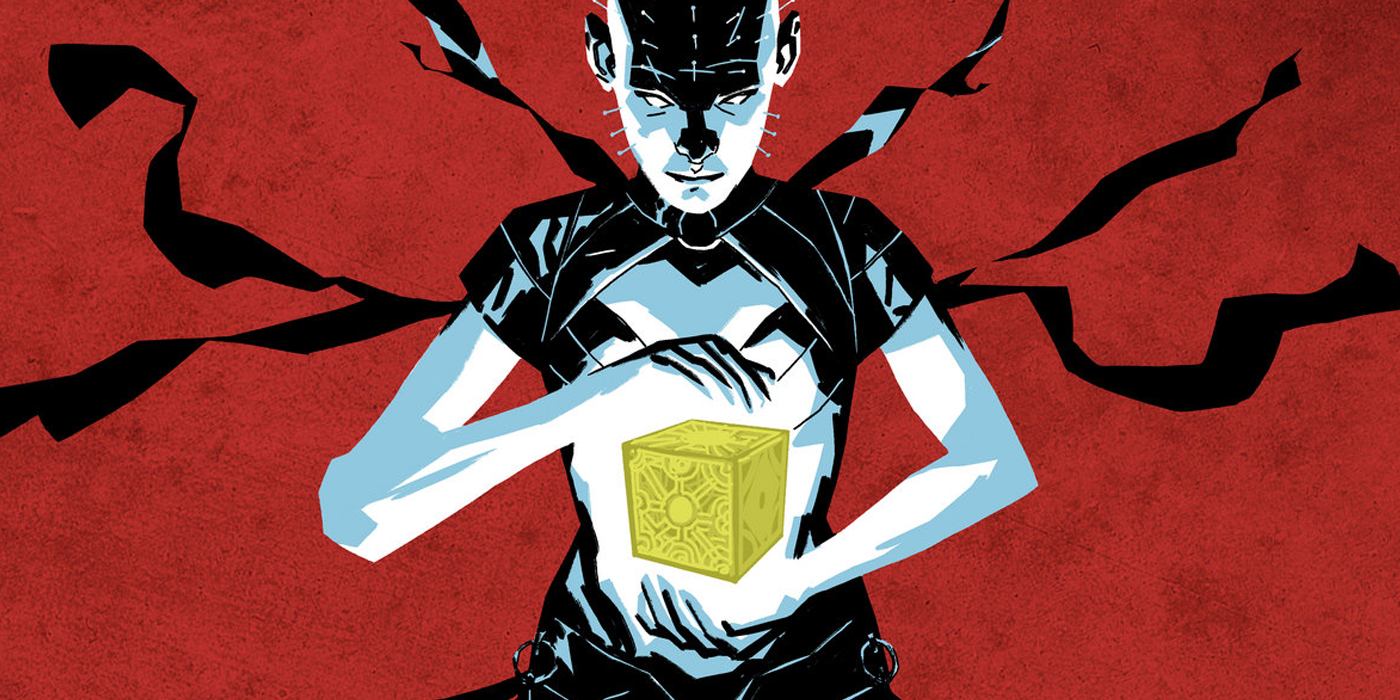The Hellraiser saga is about many things, including temptation and the danger of making deals with demons. You may be most familiar with the pain and pleasure indivisible of the movies, but the Hellraiser franchise stretches far beyond those.
The stories of the vividly named Order of the Gash, headed by the Hell Priest, more popularly known as Pinhead, and his cenobite acolytes. They show they are far more than an infernal hunt and retrieve unit. That said, you should always be careful when a puzzle box falls into your hands.
If you find yourself thinking of Clive Barker’s distinctive vision of Hell in the depths of the night, we’ve collected seven ways to immerse yourself in the nightmare of Hellraiser. As always, be careful with your wishes.
In books

The Hellbound Heart was the novella that started it all. Young horror writer Clive Barker published the book in late 1986, a year before he adapted and directed the first Hellraiser movie. The novella broadly follows the movie’s beats, although there are intriguing extra dashes of the Engineer, an entity ambiguously hinted at in the film. If Pinhead dominates your vision of Hellraiser, you’ll be surprised to find that the distinctive look and name were shaped far more in the movie. Barker, disliking the fan’s name for the icon, tends to formally address the leader of the cenobites as “the Hell Priest” and “the Cold Man.”
That antagonist couldn’t be contained in one book. As the character took on an iconic life of his own, and Barker’s grip on the sprawling franchise disappeared, the writer sought to regain control of the Hell Priest by ending him once and for all.
A sequel to The Hellbound Heart, The Scarlet Gospels was Barker’s attempt to close the story on Pinhead, a character he’s long lost sight of on screen. It drew in another of Barker’s characters, the occult detective Harry D’Amour who first appeared in The Book of Blood, The Last Illusion, at the head of a force attempting to stop Pinhead’s mutiny in Hell. Another sequel, The Toll, was written by Mark Alan Miller from a story by Barker. Completists will also want to check Barker’s Weaveworld, where cenobites have a brief cameo, and Paul Kane’s intriguing Sherlock Holmes and the Servants of Hell, which threw the famous consulting detective into the path of the demons.
At the Movies
The Hellraiser saga has crept up to an impressive 11 movies—comfortably putting it on the same level as slasher franchises like Halloween and Friday the 13th. However, for much of its movie career, Hellraiser has been kept in a Purgatory of rights. Filming arrangements and Dimension Films’ keenness to retain the franchise meant several speculative scripts were adapted, bolting on the name and cenobite details to keep the Hellraiser’s infernal fire burning.
Only movies at the beginning and end of the original sequence were written as Hellraiser movies, with the cenobites long resigned to straight-to-video. Still, they’re not all bad if you’re after a hell-raising experience. The sixth movie, Hellseeker, is particularly notable for picking up the story of Kirsty Cotton from the first movie.
While Doug Bradley is perfectly iconic as Pinhead and a scene-stealer in the briefest of appearances, you’ll only find him in the first eight movies (ending with the disappointing reality-TV-inspired Hellworld).
Hulu’s 2022 reboot, taking its lead from The Hellbound Heart, shows there’s plenty of mileage left in the concept. Even if fans were disappointed that the cenobites weren’t finally heading back to movie theaters, the significant involvement of Clive Barker for the first time since 1996’s Hellraiser: Bloodline was cause for celebration. Pain and pleasure, as usual.
In comics

Comic books have been home to some of Hellraiser’s most impressive moments. Marvel imprint, Epic, published tie-in comics soon after the first movie’s release. The majority were short stories that formed an atmospheric anthology overseen by Clive Barker. Thrown in were an unseasonal holiday special, an adaptation of the third movie, Hell on Earth, and crossovers with other properties.
Boom! Studio’s impressive run between 2012 and 2015 is well worth a read, pulling together some of the richer parts of the Hellraiser movie mythos and other Barker properties. For some fans, it was heresy to reverse the roles and fortunes of characters like Kirsty Cotton, the irrepressible Harry D’Amour, and the Hell Priest himself, but it’s a vivid and horrifically fun ride overall.
Latterly, Seraphim Inc. has produced two anthologies of short stories, excerpts, and comic pieces that, be warned, push the boundaries of an R-rating.
Pick up the merchandise

Like any good horror franchise, Hellraiser has spent years convincing fans that merchandise belongs to them and always has. Action figures, models, masks, clothing, Bobbleheads, and Funko Pops! have spread the gospel of the cenobites.
Hellraiser’s literary roots have set it apart from other horror franchises. There are plenty of books and essays, many from Barker himself, that duck around parallel mythologies and the process.
The centerpiece has to be the fabled Lemarchand box. Who can argue with a Lament Configuration paperweight?
On Audio

Doug Bradley’s lead cenobite is rightly a horror icon, but Hellraiser has an inbuilt reset button. Yes, the lead cenobite of The Hellbound Heart was tall, bald, blanched, and had nails driven into their head, but they were also genderless, albeit with a feminine voice. Hulu’s adaptation wasn’t the first to reset Pinhead’s character. Bafflegab Productions released a full-cast audio adaptation of the novella in 2018, penned by Paul Kane. It’s an evocative listen and a more faithful adaptation of The Hellbound Heart than any other.
In a game

In 2021, the online horror phenomenon, Dead by Daylight, finally opened the gates of Hell with this infernal add-on. The cenobite arrived as one of the game’s savage killers, adding a uniquely Hellraiser twist to the game’s supernatural mechanics. This infernal menace is instantly recognizable as Pinhead, with all manner of chain and hook-related horrors to inflict on the game’s hopeful survivors and a brilliant way of putting the Lament Configuration at the center of the spectacle. Playing this is compulsory at Halloween.
In real life

Sadly, and understandably, this isn’t as readily accessible as other experiences on this list, but you have to keep hope in Hellraiser. Doug Bradley debuted The Pinhead Experience at 2017’s Mad Monster Party in Arizona. Working with special effects supremo Tom Savini, Bradley spent a year perfecting the walk-in experience that allowed fans to experience the icon in full cenobite costume (with remodeled make-up), a cinematic set, and working lament configuration. Sights we can only hope horror fans will see again.

